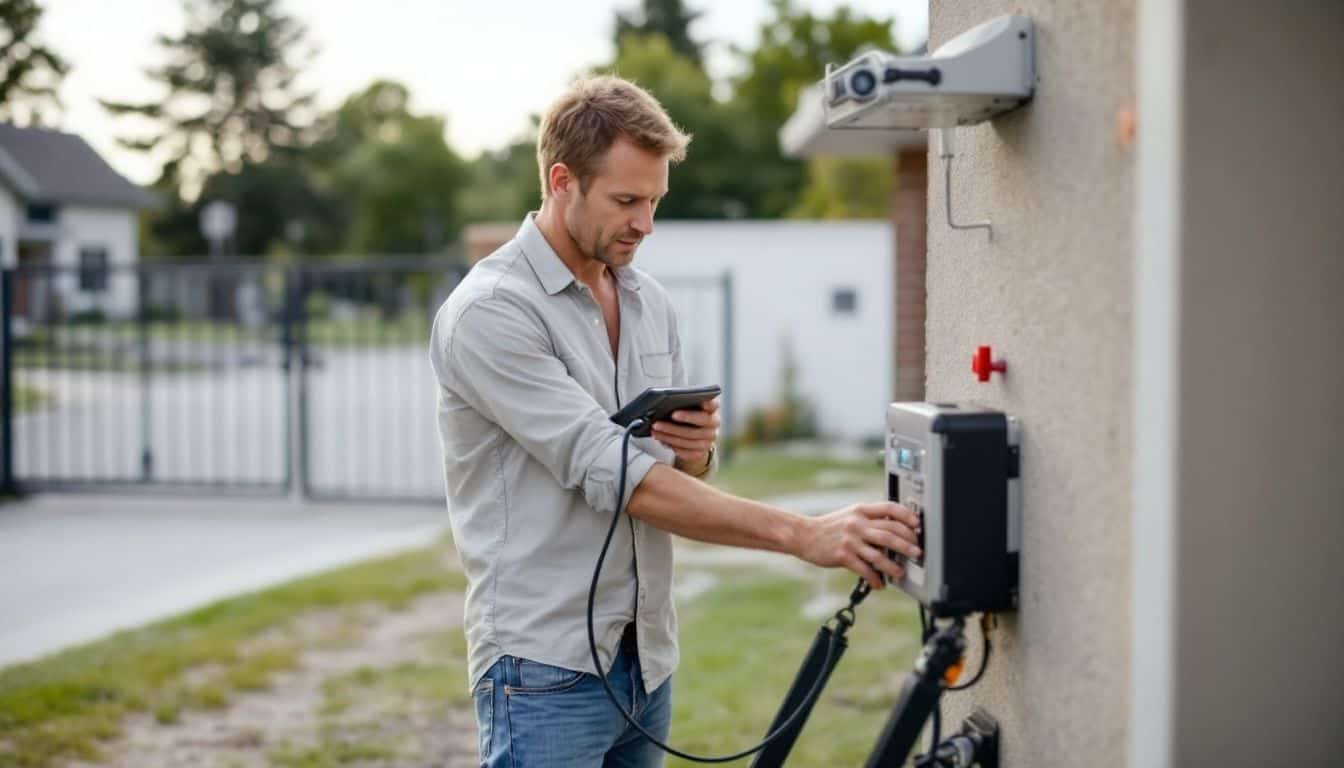Many homeowners struggle to understand how automatic gate openers work before buying one. These smart devices have changed the way we enter our homes, with over 60% of new homes now using them.
I will break down the four main parts of gate openers and share easy tips to make them work better. You’ll learn everything from basic motors to cool smart features that make your gate safer and easier to use.
Key Takeaways
Automatic gate openers have four main parts: electric motors (24V/120V), sensors, access control systems, and power supplies. Over 60% of new homes now use these smart devices for enhanced security.
Gate sensors use infrared beams and motion detection to spot obstacles. They work with access control systems like keypads, fingerprint scanners, and smartphone apps to manage entry safely and securely.
Most gates open in about 12–14 seconds. Sliding gates move at one foot per second. Barrier arms are fastest, opening in just 1.2 seconds for high-traffic areas.
Modern gates connect to smart home systems through apps like ButterflyMX. Users can control gates remotely using phones. The systems offer video feeds and temporary access codes for visitors.
Safety features include auto-reverse mechanisms and infrared beams. These stop gates instantly when obstacles appear. Manual release options let owners open gates by hand during power outages.
Table of Contents
Components of Automatic Gate Openers
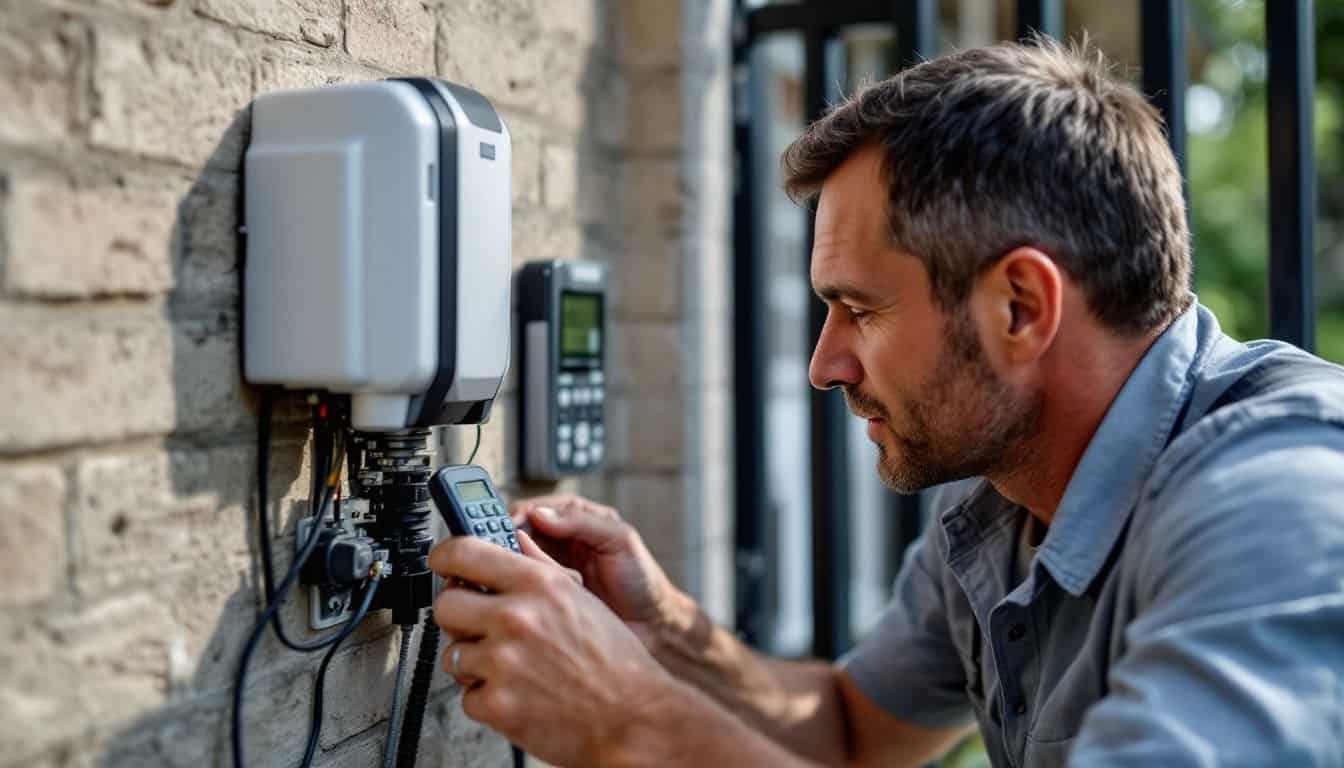
Automatic gate openers pack four essential parts that work together to create a smooth entry system. Each component plays a vital role – from the electric motor that moves the gate to the smart sensors that keep you safe.
Electric Motors
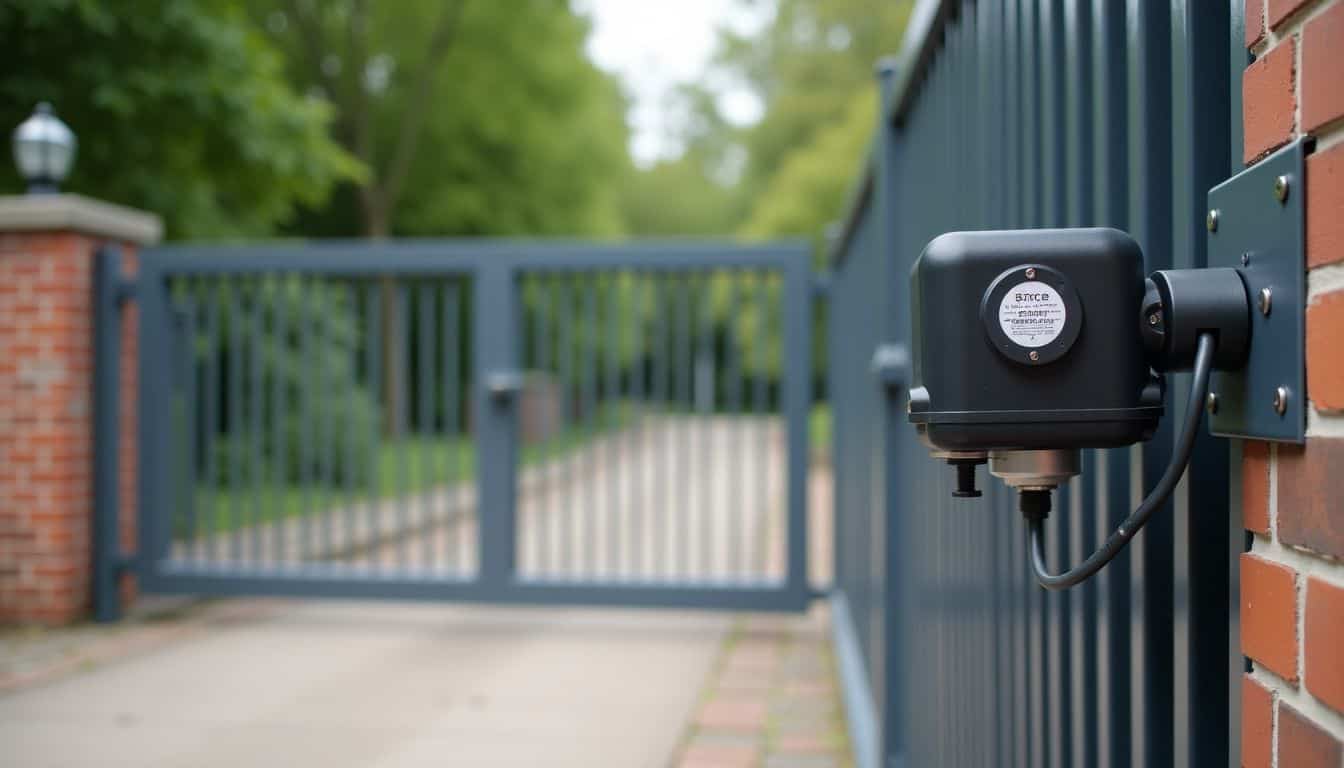
Electric motors form the heart of gate automation systems. These powerful devices run on either 24V or 120V power supplies to move gates smoothly and steadily. Most motors link to gears, chains, or hydraulic systems that push or pull gates open and closed.
The motor’s strength affects how fast and smooth your gate moves.
Gate motors need the right power setup to work well. Some systems connect straight to the electrical grid, while others use backup batteries for power outages. Modern gate systems, including vertical lift gates, rely on these motors for daily operation.
Smart features help motors adjust their force based on gate weight and size.
The efficiency of an electric motor directly impacts the gate opener’s performance and longevity.
Gate Sensors
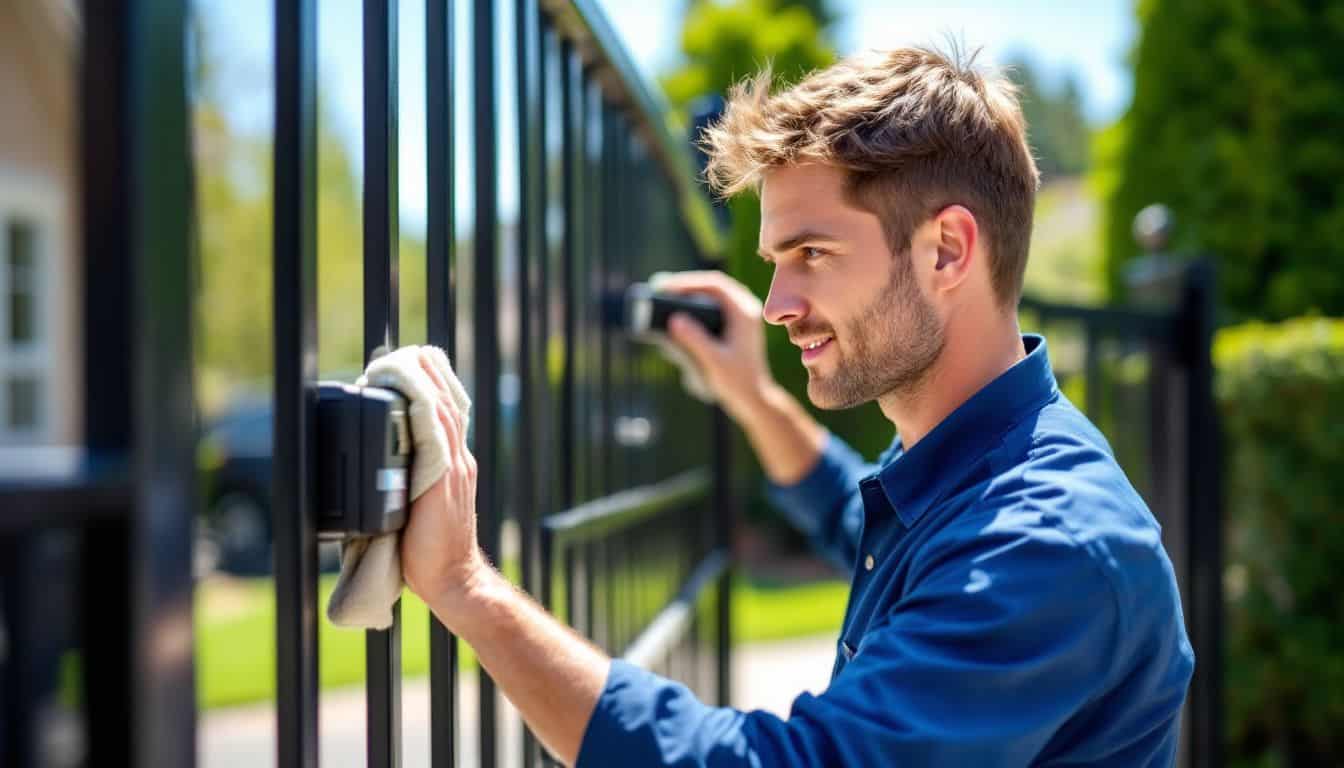
Moving beyond the basic motor functions, gate sensors serve as the eyes and brain of automatic gate systems. These smart devices use infrared sensors, inductive loop detectors, and pressure sensors to spot any objects in the gate’s path.
The sensors work through motion detection and infrared radiation to keep people, cars, and pets safe from accidents.
Gate sensors need regular upkeep to work their best. Dirt and debris can block the infrared beams, so cleaning the sensors helps them detect obstacles better. Most modern systems pair these sensors with access control systems like card readers, facial recognition, or mobile apps for extra safety.
The sensors link to the gate operator, making the gate stop or reverse if something blocks its path.
Access Control Systems
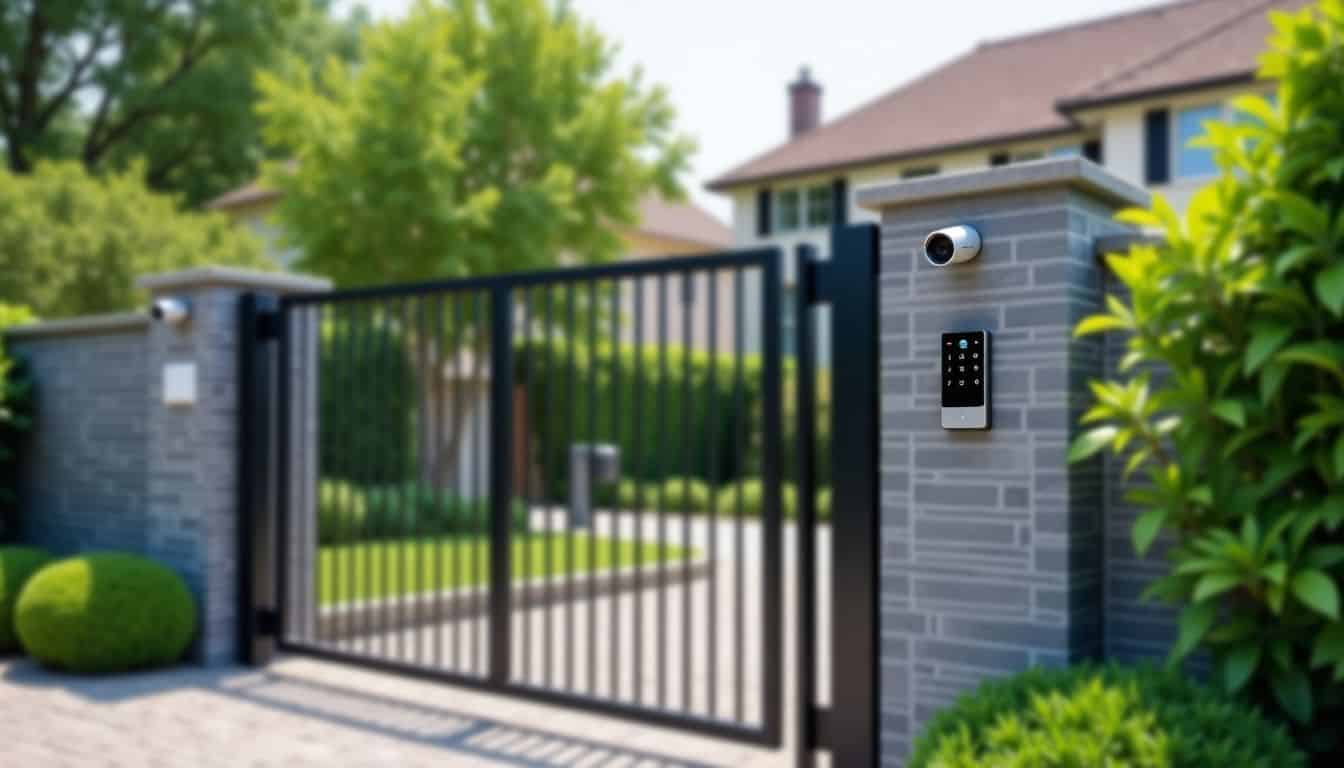
Gate sensors work hand-in-hand with access control systems to create a secure entry point. Modern access control systems offer multiple ways to open your gate. Digital keypads let you set custom codes for different users.
Smart features like fingerprint scanners, RFID cards, and license plate readers make entry smooth and quick.
These systems connect to your smartphone through Wi-Fi or Bluetooth. You can control who enters your property right from your phone. Many systems now work with Amazon Alexa and Google Assistant for voice commands.
The control board stores all entry data and manages user permissions. Biometric scanners add an extra layer of security by checking unique body features. CCTV cameras can watch and record all gate activity.
Power Supply and Backup Batteries
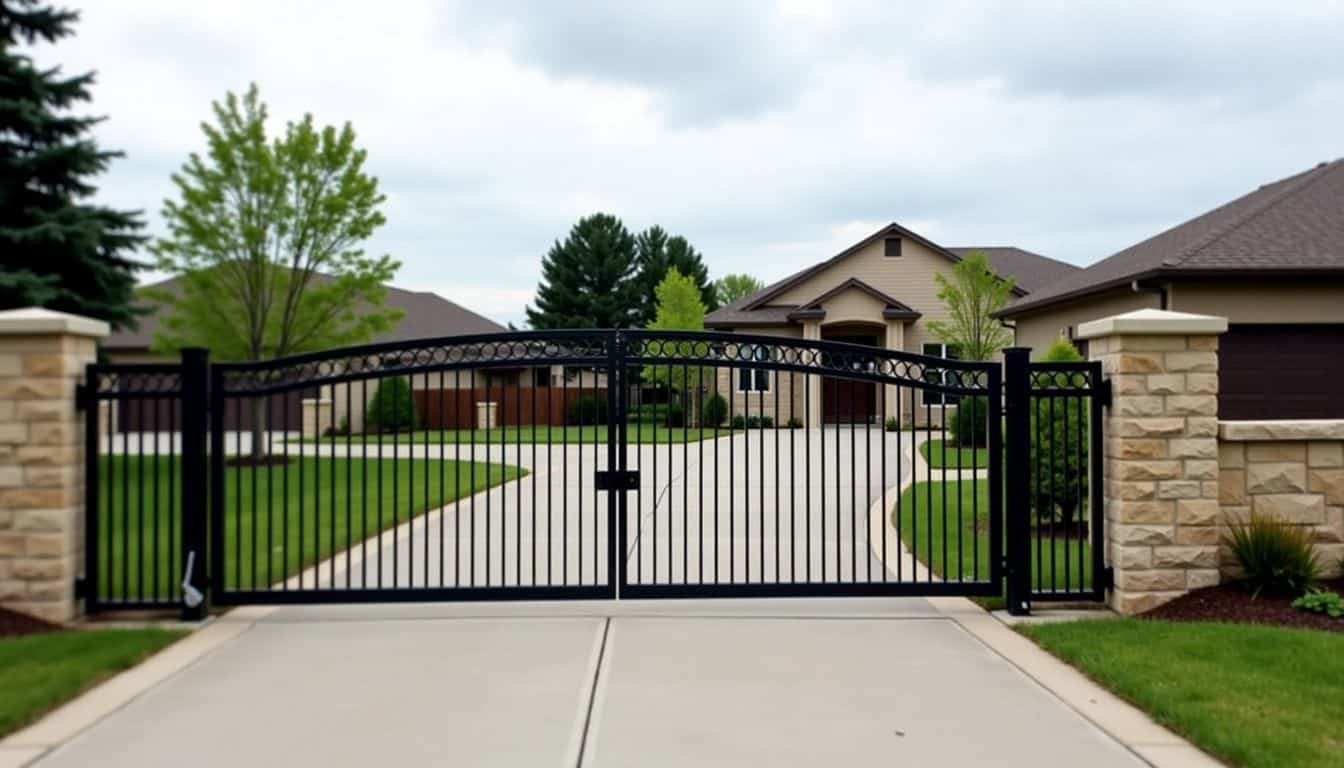
Most automatic gates run on electric power through 120V or 240V systems. A steady power supply keeps these gates moving smoothly day and night. Smart users opt for battery backup systems to handle power failures.
These backup batteries kick in right away during blackouts, so the gate stays active.
The backup power system works in two ways – fail-open or fail-secure modes. Solar panels offer another power option for off-grid locations. My experience shows that solar-powered gates work best with a battery backup for cloudy days.
The 24V low-voltage systems use less energy while still providing reliable operation. Clean energy solutions like solar power help cut down electric bills, though wired systems give the most consistent results.
How Automatic Gate Openers Work
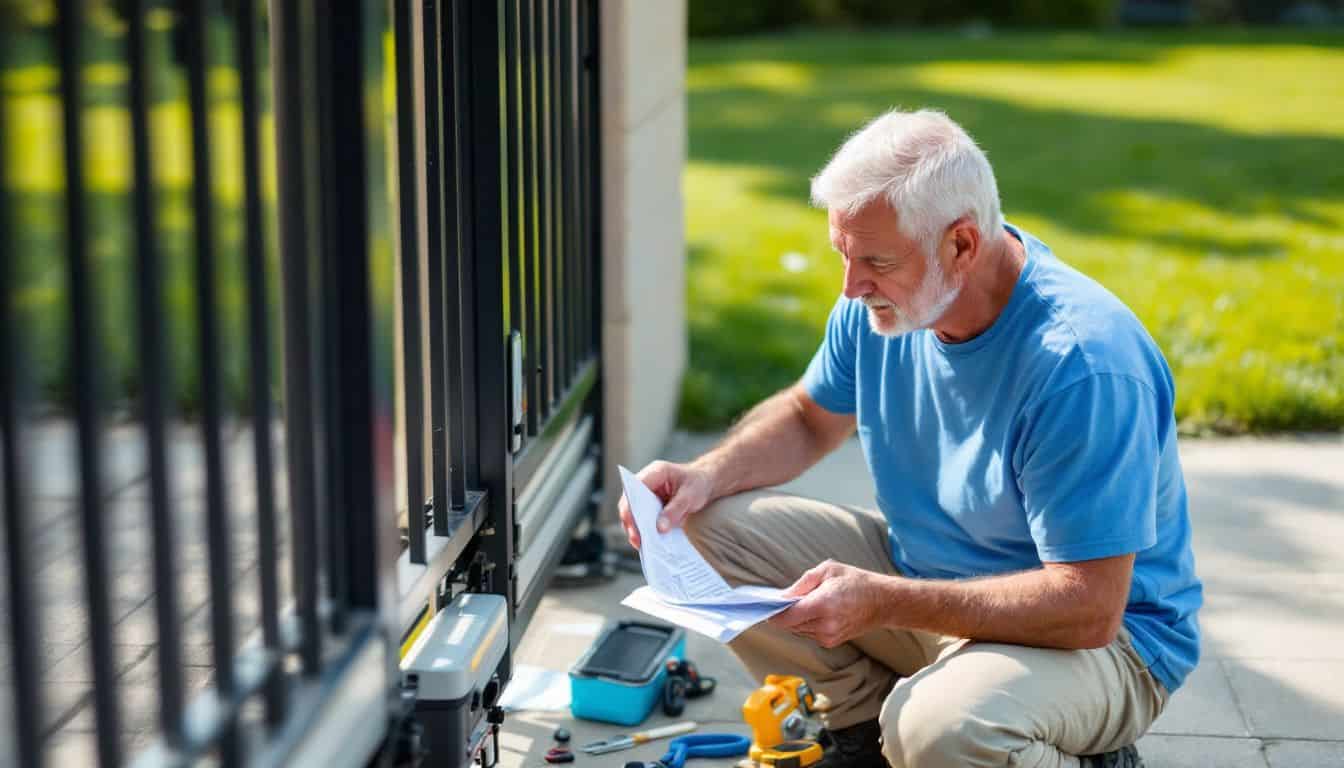
Automatic gate openers use electric motors, sensors, and smart controls to move gates smoothly – from basic remote clicks to advanced voice commands that make your life easier… Want to know the magic behind these smart gates? Let’s check out the cool tech that powers them!
Role of Electric Motors in Gate Movement

Electric motors serve as the heart of gate automation systems. These motors link to a control board that sends specific signals to start or stop gate movement. The motor design varies based on the gate type – sliding gates need different power systems than swing gates.
I’ve worked with various motors, and their smooth operation makes a huge difference in daily use.
The motor system uses two main methods to move gates. Some motors work through a screw drive with a threaded rod that pushes and pulls the gate. Others use hydraulic fluid in a closed system to create movement.
My experience with both types shows that screw drives work great for lighter gates, while hydraulic systems handle heavier commercial gates better. The motor’s power matches the gate’s weight and size to ensure proper operation and long-term reliability.
Function of Sensors in Detecting Obstacles
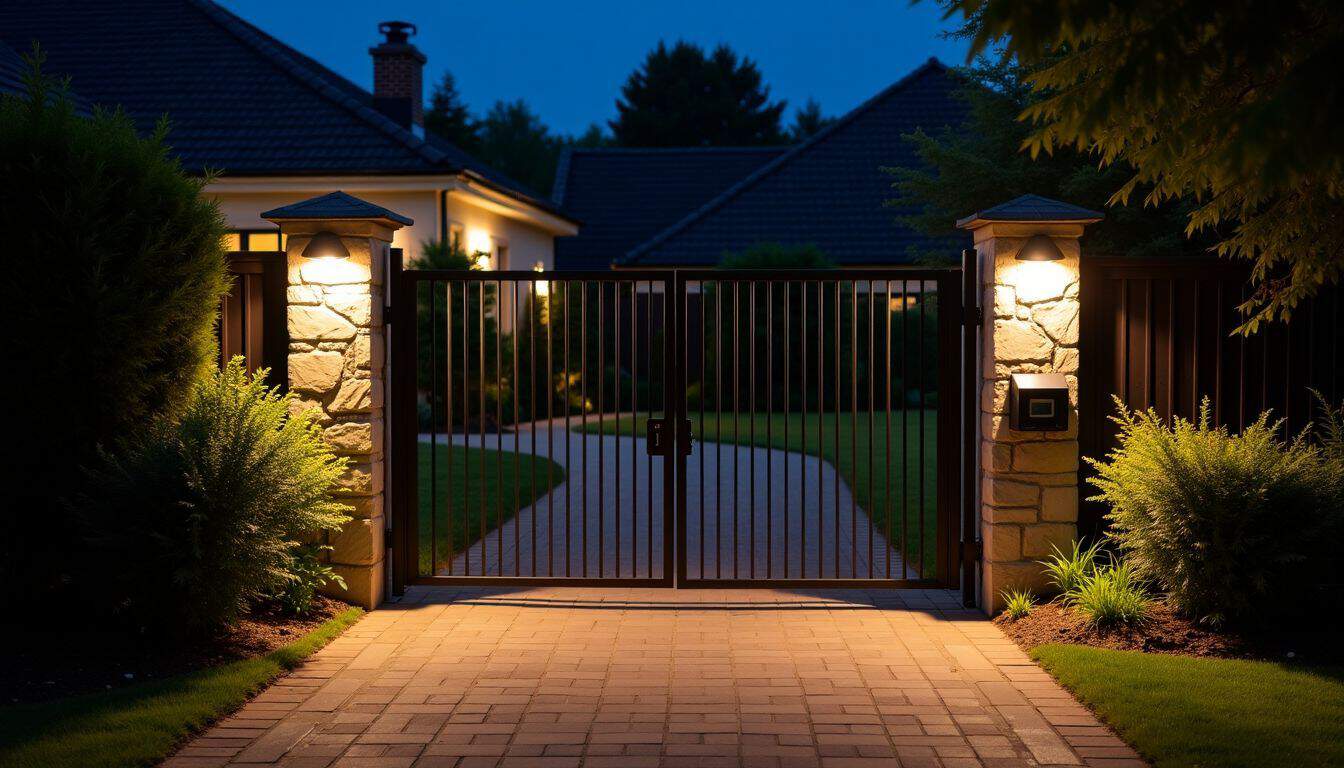
Sensors act as the eyes and ears of automatic gate systems. These smart devices use infrared beams, radar signals, and optical scanners to spot objects in the gate’s path. The sensors create an invisible safety net that stops gates from closing on cars, people, or other items.
Metal detection units add an extra layer of safety by finding vehicles near the gate.
Safety features work hand-in-hand with these sensors to prevent accidents. The auto-reverse mechanism kicks in if the sensors detect any obstacle. This smart feature makes the gate stop and move back right away.
A mix of radar and infrared sensors offers the best protection for both residential properties and commercial sites. The next part shows how access control systems fit into this high-tech setup.
Integration of Access Control Mechanisms
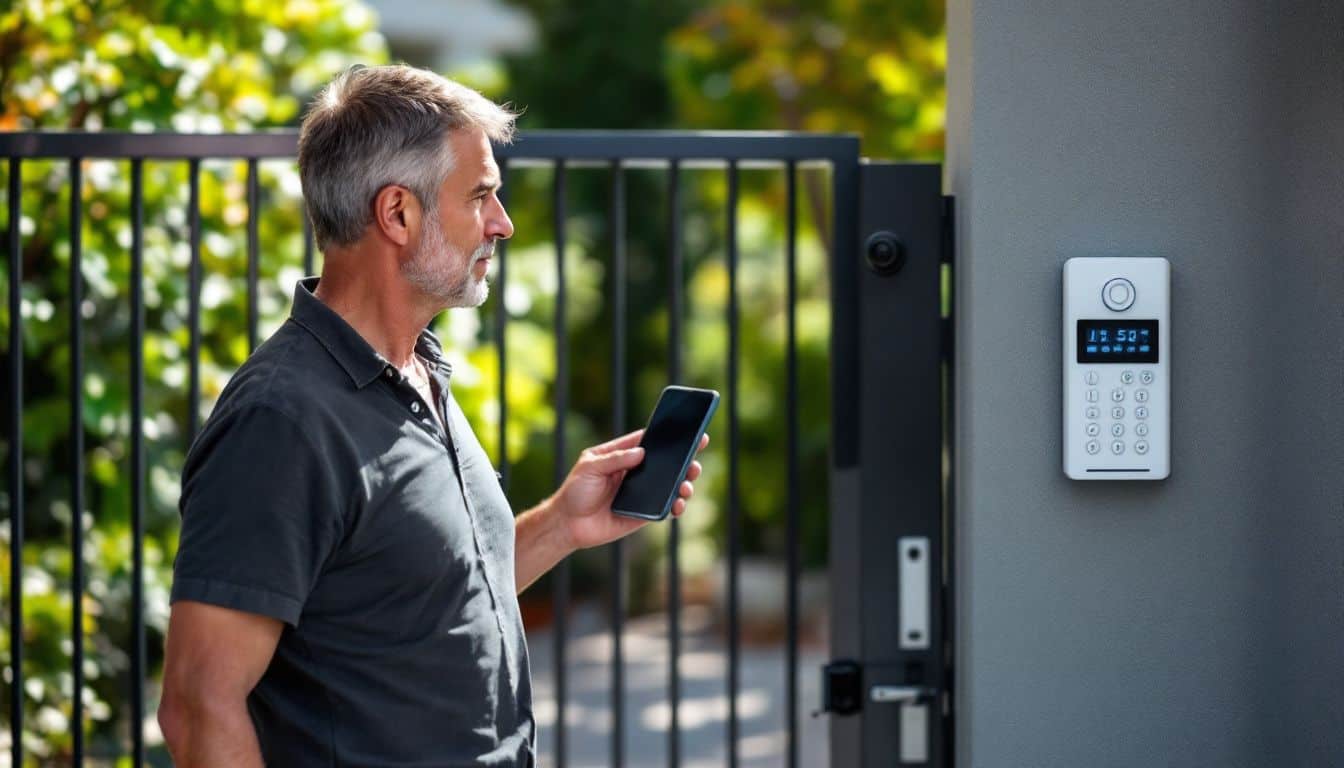
Modern access control systems make gate operation a breeze. Digital keypads, telephone entry boxes, and mobile apps give users total control over who enters their property. Smart gates now link with home automation systems for voice commands through Alexa or Google Assistant.
The latest encryption keeps wireless signals safe from hackers who might try to break in.
Each gate system needs specific access tools that match its use. A basic home setup works great with a keypad and remote controls. Bigger properties often add security cameras and intercom systems for extra safety.
Solar-powered options help gates run off the grid, while backup batteries keep things moving during power outages. These smart features turn simple gates into complete security solutions.
Power Supply Options and Backup Operations
Access control systems link directly to power sources that keep gates running. Electric gates need a steady power supply to work right. Most gate systems run on standard electrical lines, but smart options exist.
Solar powered systems offer a green choice for areas with good sunlight. These systems cut energy costs while helping the environment.
Backup power keeps your gate secure even when the lights go out.
Backup batteries play a key role in gate security. They jump into action during power outages. Gates can work in two ways if power fails – they either stay locked (fail-secure) or open up (fail-open).
Most home gates use fail-secure mode to keep things safe. The backup system switches on fast to keep the gate working. Solar panels pair well with rechargeable batteries to create a reliable power setup.
Types of Automatic Gate Openers
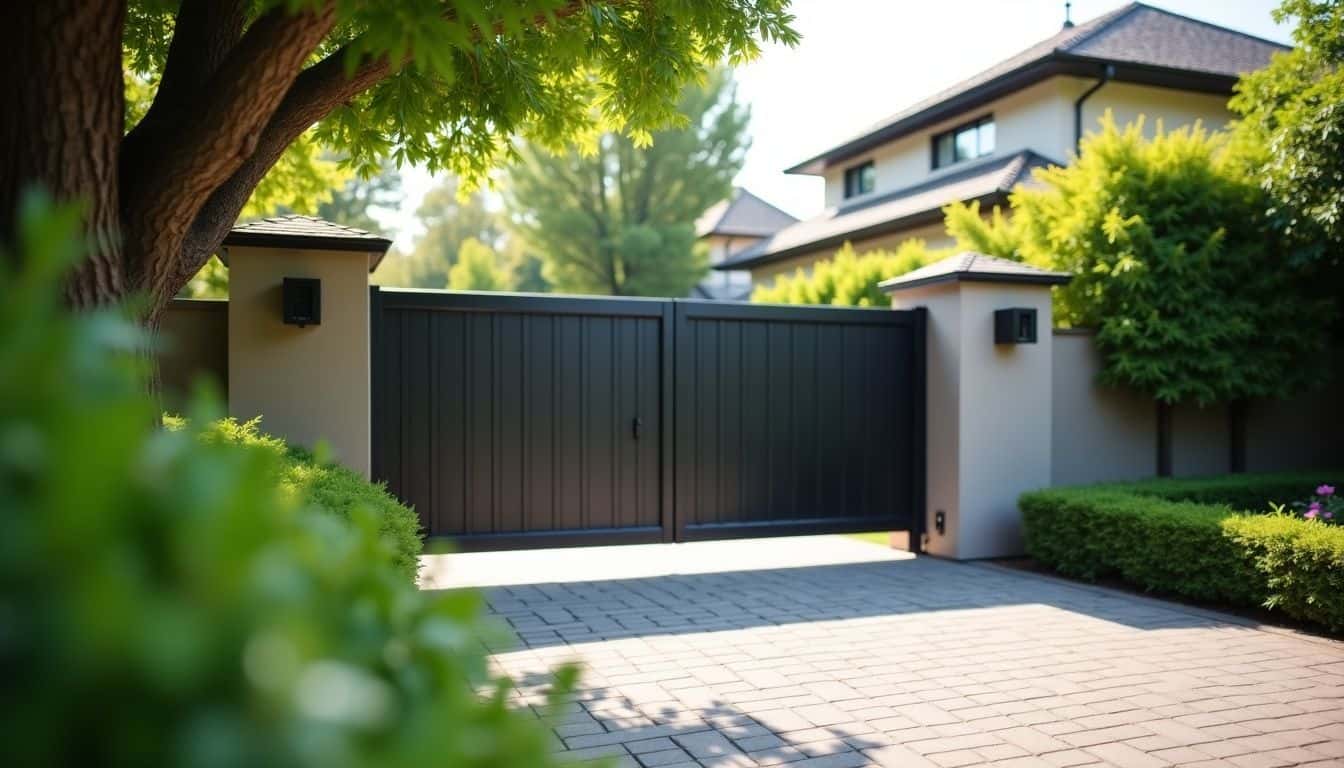
Automatic gate openers come in different styles to match various property needs and layouts. Each type brings unique features to boost your curb appeal and security – from swing gates that open like doors to sliding models that glide smoothly along tracks.
Swing Gate Openers
Swing gate openers use linear rams to push or pull gates open. These smart devices make your gate move smoothly in a 12-second cycle. Most homeowners pick linear rams because they cost less and fit easily on most gates.
The rams connect to strong motors that handle the heavy lifting of your gate panels.
Smart features boost these gate openers to new levels. You can link them to your smart home system for voice control through your phone. The motors pack safety features like auto-reverse if they hit something in their path.
Some models even work with intercoms and keypads to keep unwanted visitors out. I’ve installed dozens of these systems, and they really shine in both curb appeal and security value.
Sliding Gate Openers
Unlike swing gates that arc outward, sliding gates move straight along a track. These gate openers use a smart combo of cog and teeth systems to push or pull gates smoothly. The motor’s strength must match your gate’s weight and size for proper operation.
Most sliding gates open at a speed of one foot per second, so a 14-foot gate takes about 14 seconds to open fully.
The sliding mechanism works great for tight spaces in car parks and commercial properties. A guide track keeps the gate steady as it slides horizontally. The system includes safety features like infrared beams to stop the gate if something blocks its path.
Electric motors power the movement, while a receiver picks up signals from remote controls or keypads to grant access.
Barrier Arm Gate Openers
Moving from sliding gates, barrier arm openers bring a different approach to access control. These gate systems excel in parking lots and toll booths where quick entry matters most.
The gate arm lifts at a 90-degree angle and opens in just 1.2 seconds, making them perfect for high-traffic spots.
Most barrier arms use electromechanical actuators to power their movement. The engine and hydraulic rams work together to create smooth, fast actions. Smart features like timers and user interface controls help manage traffic flow.
These systems often include backup power options to keep working during outages, which makes them reliable for commercial sites that need constant access control.
Underground Gate Openers
Underground gate openers bring a perfect mix of function and aesthetic appeal to your property. These systems hide beneath the ground and work through a series of strong motors and gears.
The setup costs more than standard above-ground options, but many property owners prefer this style for its clean look. A typical underground opener can handle heavy gates up to 1,000 pounds with ease.
The installation process needs careful planning to protect against water damage and dirt. Most systems come with a manual release option for power outages, which helps prevent unauthorized access.
Smart features like garage door keypads and remote controls make these systems super convenient. The motors sit in waterproof boxes below the surface, connected to solid power supplies that keep your gate running smoothly all year round.
Bi-Folding Gate Openers
Moving from underground systems, bi-folding gates bring a smart solution for tight spaces. These gates work like an accordion, with panels that fold neatly against each other for quick access.
Property owners love these gates in high-traffic areas because they open and close fast. The folding action needs less space than swing or sliding gates.
Smart features make bi-folding gates perfect for busy spots. Many models link to garage door openers and offer privacy controls through apps. The gates pack strong safety features to protect cars and people.
Backup power keeps them working during outages. Most gates come with remote access and keypad options for easy control.
Safety Features in Automatic Gate Openers

Safety features in automatic gate openers protect both people and property from accidents. Modern gate systems pack smart sensors and fail-safe mechanisms that stop and reverse the gate if they spot any obstacles – just like the safety tech you’d find in railroad crossing boom gates.
Auto-Reverse Mechanisms
Auto-reverse mechanisms serve as a vital shield against accidents in gate automation systems. These smart features stop and reverse the gate’s motion if they detect any obstacles in the path.
I installed one last month on my property, and it works like magic – the gate instantly backs off if anything blocks its way. The system uses pressure sensors to spot cars, people, or objects that might get caught in the gate’s path.
Modern gate installations now come with built-in auto-reverse features to protect both property and people. The mechanism kicks in within milliseconds of detecting resistance, making it perfect for homes with kids or pets.
My neighbor’s boom gate saved his car from damage last week when it started closing while he was still driving through. The next key part we’ll look at is the infrared beam system that makes these gates even safer.
Infrared Beams for Obstruction Sensing
Moving beyond basic auto-reverse features, infrared beam sensors add an extra layer of safety to your gate system. These smart sensors use invisible light beams to spot objects, people, or vehicles in the gate’s path.
The beams work like a watchful eye across your property, ready to stop the gate if anything breaks their line of sight.
I installed these sensors on several garage doors last month, and they worked great in both rain and snow. The system needs two parts: a transmitter that shoots out the infrared beam and a receiver that catches it.
If something blocks this beam, the receiver signals the gate to stop moving. The best part? These sensors only need quick cleaning with a soft cloth to keep them working well. Most property owners love this feature because it cuts down their risk of accidents while automating their entrance security.
Manual Release Options
Manual release systems serve as a vital backup for automatic gates. A special key unlocks the gate’s motor during power failures or system issues. This smart feature lets property owners open their gates by hand without any fuss.
The manual release mechanism needs just a few screws to stay secure and ready for action.
Most gate makers build these release options right into their systems as a must-have safety tool. The release key fits into a special slot near the motor unit. Users can pull the release lever to disconnect the motor from the gate.
This setup makes the gate move freely by hand until power returns or repairs finish up.
Smart Features and Connectivity
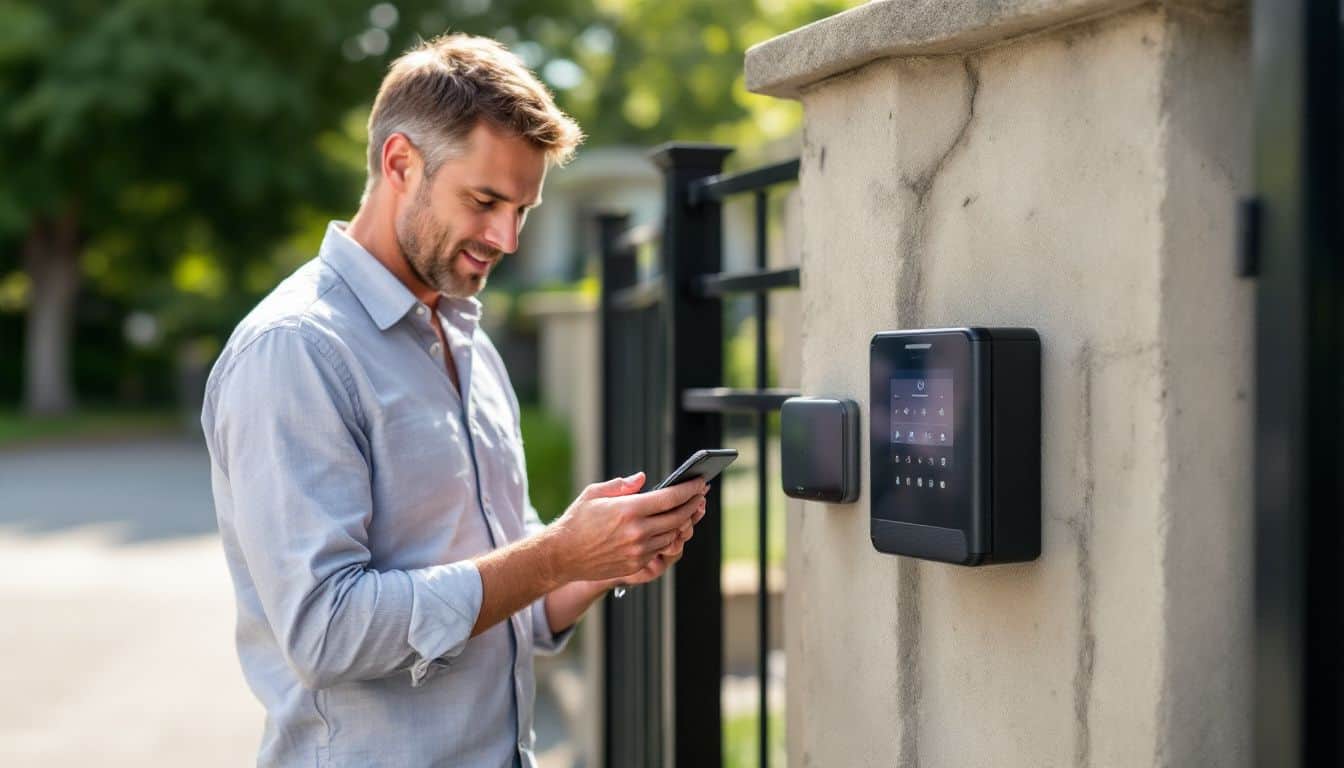
Modern gate openers connect to your phone and smart home systems, letting you control access from anywhere – read on to learn how these smart features boost your property value and make life easier.
Smartphone Integration
Smart gate systems now link directly to your phone through apps like ButterflyMX. I tested this setup last month and loved how it lets me open my gate with just a tap on my screen – perfect for those times if you’re bored and waiting in your car.
The base station connects to your home network and sends real-time alerts about gate activity straight to your device.
Your guests won’t need to wait outside anymore. The video intercom feature lets you see and talk to visitors through your phone screen. You can give them quick access using temporary QR codes or PINs, which boosts your property value and security.
The system stores all entry records, so you’ll know exactly who came by and when.
Remote Operation with Keypads or Biometric Systems
Modern gate systems offer two main ways to open gates from afar – keypads and biometric scanners. Users can punch in their code on a keypad or use their unique body features like fingerprints and faces to gain entry.
The latest systems work with both iPhone and Android phones through special apps. This lets owners give different access levels to family members, workers, or guests.
Gate control now fits in your pocket through smart technology. Most systems include facial recognition and fingerprint scanning for tight security. The control panel sends signals straight to your phone for real-time updates about who comes and goes.
You can watch live video feeds, get alerts about unusual activity, and even open the gate for delivery drivers while sitting at work. The backup power keeps everything running during outages.
People Also Ask
What are the main parts of an automatic gate opener?
An automatic gate opener has four key parts: the motor unit, control board, safety sensors, and remote control. The motor gives power, the control board manages commands, sensors keep things safe, and the remote lets you open the gate from far away.
How does the motor in an automatic gate opener work?
The motor turns electric power into moving force. When you press your remote, the motor gets a signal to start. It then pulls or pushes the gate using gears or arms. Some motors run on house power, while others use solar energy.
Can I make my regular gate into a smart gate?
Yes! You can add smart features to your gate. Install a Wi-Fi controller to open your gate with your phone. Add cameras to see who’s at your gate. Some systems even let you give special codes to guests or delivery people.
What safety features should my automatic gate have?
Every automatic gate needs safety sensors to stop the gate if something is in the way. Install backup batteries for power outages. Add warning lights and sounds when the gate moves. Make sure your gate has a manual release in case the power fails.
References
https://www.gatefences.com/what-you-need-to-know-about-automatic-gate-sensors/ (2023-03-24)
https://www.gatefences.com/understanding-the-components-of-an-automatic-gate/ (2023-03-21)
https://smartrent.com/news/best-gate-entry-systems/ (2024-07-18)
https://creativedoor.com/blog/the-importance-of-having-a-backup-battery-for-your-automatic-gate
https://metrogatesrepair.com/how-do-automatic-gate-sensors-work/
https://aautomaticgate.com/types-of-automatic-gate-openers/
https://www.gatefences.com/understanding-the-different-types-of-automatic-gate-openers/ (2023-03-27)
https://www.tristategate.com/blog/automatic-gate-opener/
https://anationofmoms.com/2025/01/automatic-gate-opener-features.html (2025-01-17)
https://www.ossden.net/news/60.html
https://www.ossden.net/news/105.html
https://butterflymx.com/blog/smartphone-gate-opener/ (2024-11-19)
https://www.researchgate.net/publication/356715396_Smart_Gate_Using_Android_Applications (2024-10-22)
